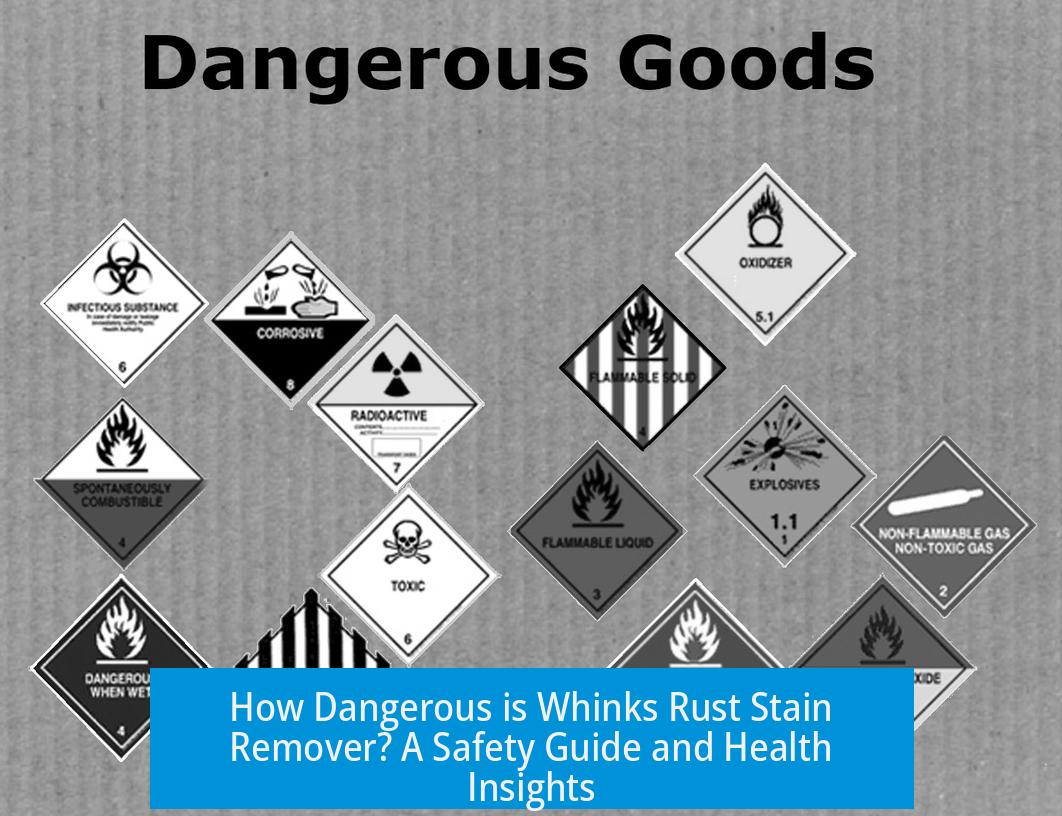How Dangerous is Whinks Rust Stain Remover?
Whinks Rust Stain Remover contains 1.5%-2% hydrofluoric acid (HF), a chemical known for its toxic properties but used safely at low concentrations in this product. If handled properly with standard safety measures, it poses limited risk to healthy adults. However, misuse or accidental exposure can cause irritation or serious harm.
Chemical Composition and Toxicity
Whinks rust remover includes hydrofluoric acid at about 1.5% to 2%. Hydrofluoric acid is a potent chemical, often feared for its potential to cause deep tissue damage and systemic toxicity at high concentrations. At the levels found in Whinks, HF’s danger is substantially reduced.
Exposure to this concentration typically results in mild skin irritation if accidental contact occurs. Ingestion, inhalation, or contact with large skin areas, however, can lead to more serious injuries. Epidemological studies report a low mortality rate (around 1%) from HF burns, and cases with mild exposure usually recover without severe effects.
Comparison with Other Chemicals
When compared to common household chemicals like lye or other acids, hydrofluoric acid in Whinks is considered safer for rust removal tasks. Lye tends to be more caustic and damaging on contact. Nonetheless, all acids require cautious handling.
Handling and Safety Guidelines
- Use standard personal protective equipment (PPE) such as gloves and safety glasses.
- Avoid ingestion and contact with eyes or skin.
- Do not pour it on skin or into footwear to prevent injury.
- Keep calcium gluconate gel or tablets nearby to treat accidental HF exposure.
- Ensure adequate ventilation or work under a fume hood, especially when heating or using larger amounts.
Health Concerns and Incident Reports
Some users have experienced health issues when exposed to vapor or spills of hydrofluoric acid, particularly in semiconductor etching with heated products. In typical household uses like rust removal, proper precautions minimize risks. For example, mild skin exposure usually causes irritation rather than serious harm.
Personal anecdotes highlight common concerns, such as if someone used it inside kettles. Generally, thorough rinsing and not ingesting the chemical limits any risk.
Key Takeaways
- Whinks contains 1.5%-2% hydrofluoric acid, which is toxic but safe at low concentrations with proper use.
- Mild skin irritation is the typical risk from accidental contact; serious harm requires higher exposure.
- Standard protective equipment and calcium gluconate availability mitigate dangers.
- Hydrofluoric acid in Whinks is safer than household lye and other acids.
- Careful use prevents most potential hazards, even during intensive cleaning tasks.
Is Whinks Rust Stain Remover safe to handle with bare skin?
It can cause mild irritation if it contacts skin. Wearing standard protective gear like gloves is recommended. Avoid prolonged or large-area exposure to reduce risk.
How harmful is ingestion or inhalation of Whinks Rust Stain Remover?
Ingesting or inhaling it is dangerous. Even low concentrations can cause significant health issues. Avoid any contact with mouth, nose, or eyes.
Does Whinks Rust Stain Remover pose a higher risk than common household acids?
It is generally safer than lye and many strong acids sold commercially. However, it contains hydrofluoric acid, so careful use is still important.
What safety precautions should I take when using Whinks Rust Stain Remover?
Use it in a well-ventilated area and wear protective gloves and eyewear. Keep calcium gluconate gel or tablets nearby for emergency treatment of skin exposure.
If someone accidentally uses Whinks Rust Stain Remover on household items, is this a health risk?
If used properly and rinsed well, it poses little risk. However, direct exposure or spills on skin or in enclosed spaces can be hazardous and should be handled carefully.





Leave a Comment